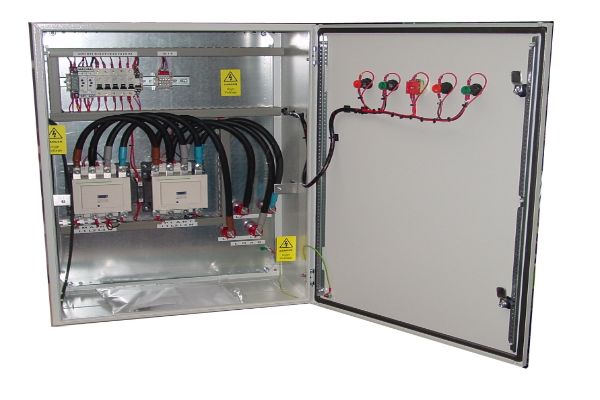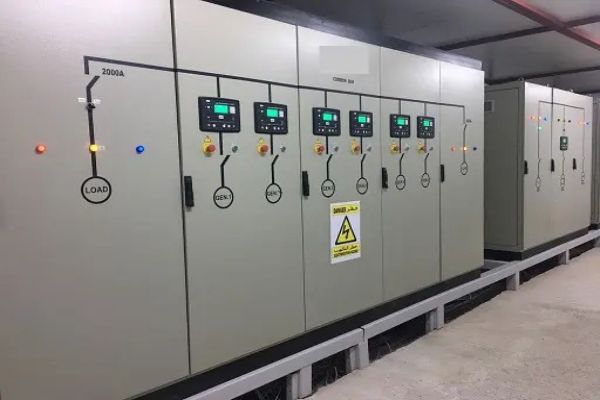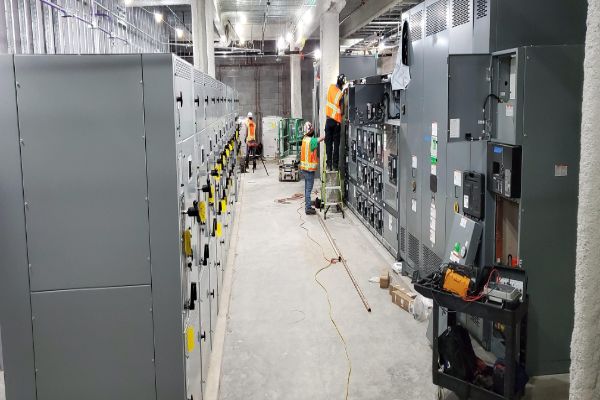
When power fails, an automatic generator start feature kicks in. This ensures your critical equipment keeps running. But how exactly does it work?
An automatic start system requires key components and precise programming to detect a power failure and initiate startup.
You might wonder, how exactly does a generator know when to start? Or can it restart itself if it shuts down? Keep reading for answers to these essential questions.
What Components Are Necessary for a Generator to Start Automatically?
When a generator starts automatically, it's not just about the push of a button. Several components must work together seamlessly.
The key components include the automatic transfer switch (ATS)1, controller, battery system2, and the generator itself.

Automatic Transfer Switch (ATS)
The ATS is a critical piece of equipment in an automatic generator system. It’s responsible for switching the load from the main power grid to the generator when it detects an outage. Without it, the generator wouldn’t know when to engage.
Generator Controller
The controller acts as the brain of the operation. It receives signals from the ATS and other sensors, determining whether the generator should start, stop, or perform maintenance checks.
Battery System
Without a reliable battery, your generator may fail to start. The battery provides the necessary power for the generator’s startup sequence. This is especially crucial for ensuring that the engine can turn over and that sensors can function.
Generator Engine and Alternator
The engine’s role is to generate mechanical power to drive the alternator, which in turn produces electricity. It’s the core of your generator’s operation, requiring regular maintenance to ensure smooth function.
Control Panel and Sensors
Modern generators come with sensors that monitor various functions such as oil pressure, coolant temperature, and fuel levels. These sensors send data to the control panel, ensuring that the generator runs optimally when it starts up.
How Does a Generator Know When to Stop Running?
Generators have sophisticated control systems and sensors that allow them to monitor their performance in real-time. These systems determine when the generator should stop running to protect itself and its components.
Sensors track key variables like temperature, oil pressure, and fuel levels to signal when a generator should stop.

Sensors and Monitoring Systems
Generators are equipped with various sensors that constantly monitor critical parameters. These sensors keep track of things like engine temperature, oil pressure, fuel levels, voltage output, and more. When any of these parameters fall outside of the safe operating range, the generator’s control system will initiate a shutdown to prevent damage.
Control Panel Alerts
The generator’s control panel communicates with these sensors3 and processes the information. If any critical parameter is out of spec, the control panel triggers a shutdown process. Many generators also feature an alarm system that alerts operators to take action before the system shuts down automatically.
Load and Power Management
Sometimes, the generator may shut down due to load conditions. If the generator detects that it’s overloaded or not able to handle the power demand, it will automatically stop to prevent damage to the engine or alternator. The control system can make this decision based on factors like current draw and engine performance.
System Safeguards and Auto-Shutdown Logic
Generators are designed with intelligent safeguards, where the control system evaluates the severity of the problem4. If it detects an issue that could cause long-term damage, such as prolonged overheating or low oil pressure, it will automatically initiate a shutdown sequence. This helps to avoid further complications or costly repairs.
What Safety Features Are Responsible for Shutting Down a Power Generator?
Generators are built with multiple safety features that are triggered when certain issues are detected. These safety mechanisms ensure that the generator stops running in a controlled and safe manner, preventing both damage to the machine and potential hazards.
Key safety features include temperature sensors5, oil pressure sensors6, fuel level monitors, and circuit protection systems7.

Temperature Sensors
Overheating is one of the leading causes of generator failure, and temperature sensors are crucial for monitoring engine heat. If the engine temperature exceeds safe limits, the temperature sensor will send a signal to the control system, which will automatically shut the generator down to prevent heat damage.
Oil Pressure Sensors
Low oil pressure is another common trigger for automatic shutdowns. The oil pressure sensor constantly monitors the engine’s oil levels and flow. If it detects low pressure, indicating that the engine is not properly lubricated, the system will trigger a shutdown to avoid internal damage.
Fuel Level Monitors
Fuel monitoring systems ensure that the generator has enough fuel to operate efficiently. When the fuel levels get low or the fuel system detects an issue (like a clogged filter or air in the lines), the generator will automatically stop running to prevent potential damage.
Circuit Protection and Overload Sensors
Electrical systems in modern generators include protection mechanisms against overloads and short circuits. If the generator detects a sudden electrical fault, such as a surge in voltage or current, these systems automatically disconnect the load and stop the engine to prevent damage to the alternator and other components.
Vibration and Mechanical Safety Sensors
Some advanced generators are also equipped with vibration sensors that monitor for abnormal mechanical movements. If excessive vibration or movement is detected (which could indicate an internal malfunction), the system will initiate a shutdown to prevent further mechanical damage.
Conclusion
A generator automatically shuts down due to safety features like temperature and oil pressure sensors, fuel level monitors, and overload protection systems, ensuring its longevity and safe operation.
-
Understanding the ATS's role is crucial for ensuring your generator system operates seamlessly during power outages. ↩
-
A reliable battery system is vital for the initial startup of your generator, ensuring it's ready when you need it most. ↩
-
Exploring the control panel's role can provide insights into how generators manage shutdowns and alerts effectively. ↩
-
Learning about intelligent safeguards can help in understanding how generators prevent long-term damage through auto-shutdown logic. ↩
-
Understanding how temperature sensors function can help you maintain your generator's efficiency and prevent overheating issues. ↩
-
Learning about oil pressure sensors can help you ensure your generator is properly lubricated, avoiding costly internal damage. ↩
-
Exploring circuit protection systems can provide insights into safeguarding your generator against electrical faults and overloads. ↩

